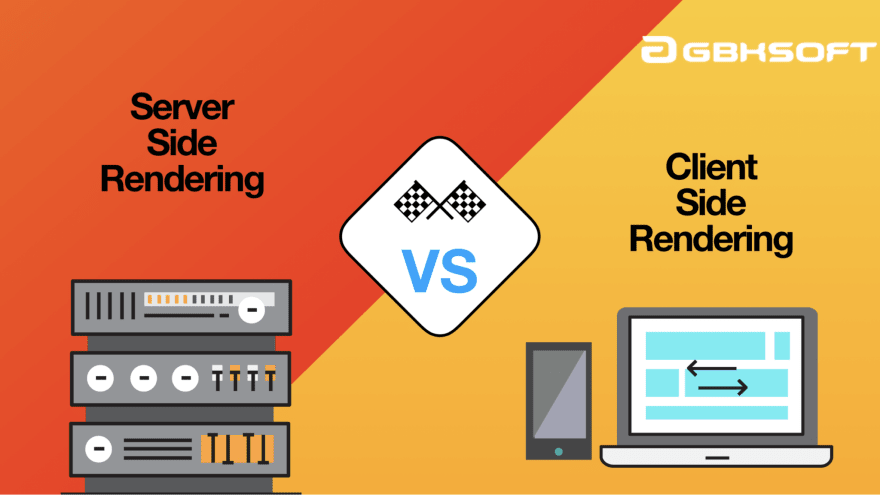Back in 2018, Google announced a solution for Javascript-driven websites: serving search bots a server-side rendered (SSR) page in the form of Dynamic Rendering. Dynamic rendering is the method of serving content in light of the user agent that calls it. This implies serving a client-side delivered rendition of your site for human clients and a different, server-side adaptation for web search tools.
But, before we get into Dynamic rendering and Prerender.io, let’s briefly discuss what client-side rendering and server-side rendering are:
Server-side rendering:
Server-side rendering (SSR) is a method for delivering HTML with meta tags and information when the page first loads. For React applications, the HTML is typically an empty div tag. The program downloads the JavaScript pack and populates the div tag with HTML. The most popular search engine, Google, creeps the substance after running JavaScript. Along these lines, we might feel that this isn't an issue.
Notwithstanding, Google web crawler doesn't use the JavaScript populated meta tags. Furthermore, a Facebook bot doesn't use the JavaScript populated meta tags when using Facebook sharing. We need server-side rendering for pre-rendering meta tags for web search tools and virtual entertainment sharing.
Client-side rendering:
Client-side rendering permits developers to make their sites rendered in the program with JavaScript. Rather than having an alternate HTML page for every highway, a client-side rendered site makes each course progressively straightforward in the program. Client-side rendering has two primary disadvantages. As far as one might be concerned, client-side rendering can improve the probability of an unfortunate client experience. JavaScript can add seconds of burden time to a page, and assuming that weight is entirely on the client (site guest), they could get baffled and leave your site.
Prerender and Dynamic Rendering:
How do you make your JavaScript website easy for Google to read and understand while giving your visitors a good web experience at the same time after both client-side and server-side rendering has let you down?
The most straightforward answer to all your problems: Prerender.io.
Prerender is the process of serving content based on the user agent requesting it.
Essentially, it’s a hybrid solution that gives the best of both worlds. It provides static HTML for bots and dynamic JavaScript for users. It gives bots a machine-readable, stripped-down, text-and-link-only version of your web page that’s simple for them to scan and parse. It gives your human users the fully-rendered, fully-optimized, intended web experience that gets them to interact with your website longer.
How Do You Implement Prerender.io?
First, you need to install Prerender.io to transform your dynamic content into static HTML.
Second, you choose the user agents you think should receive static content. In most cases, this includes search engine crawlers like Googlebot and Bingbot. There might be others, such as LinkedInbot, you also wish to include.
If your prerendering service slows down your server or your HTTP requests increase, consider implementing a cache to store content. Next, determine if your user agents require desktop or mobile content. You can use dynamic serving to give them the appropriate solution.
Finally, configure your servers to deliver static HTML.
For more details: https://prerender.io/how-to-install-prerender/
Prerender.io is an ideal way to fix your JavaScript SEO problems. One of the most significant benefits of dynamic rendering is that it eliminates any issues related to your crawl budget while being cost-effective. And it doesn’t require advanced technical knowledge to implement.
So when should you use dynamic rendering?
Prerender.io is a good solution if you have a large website with lots of content that changes frequently (e.g., an e-commerce store with revolving inventory). If that’s the case, your website requires quick and frequent indexing. Dynamic rendering will ensure that your pages are indexed and displayed correctly in the SERPs.
It’s also beneficial for websites that rely on social media sharing, such as those with embeddable social media walls or widgets.
So, what are you waiting for? Check out Prerender.io and start by registering for their free package, and then you can take it from there!









Top comments (0)